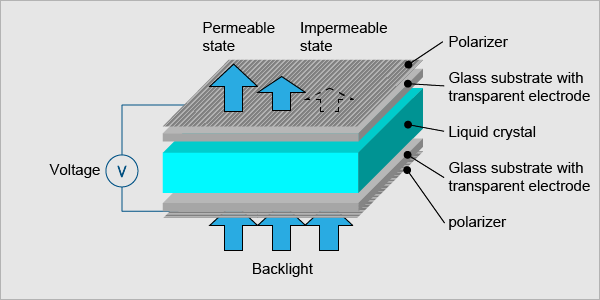Liquid Crystal and Principle of Liquid Crystal Display
what is liquid crystal (Liquid crystal)
liquid crystal refers to the intermediate state of a substance between a solid (crystal) and a liquid. When crystals with a high order on the molecular sequence melt, they usually become liquid, with fluidity, but there is no such sequence at all. However, the fine strips of organic molecules remain orderly in the molecular direction after melting, although they will be lost at the molecular position. In the state where the molecules are in a uniform orientation, even if they are liquids, they have a refractive index similar to crystals, a dielectric constant, and other physical properties similar to crystals, depending on their orientation. That's why they're called liquid crystals. The following figure shows the structure of 5CB(4-n-pentyl-4 '-cyanobiphenyl) liquid crystal molecules.
liquidcrystal fractionexample

liquid crystal display principle (Principle of liquid crystal display)
liquid crystal display (LCD) has a liquid crystal material sandwiched between two pieces of glass. In the absence of any voltage applied between the transparent electrodes, the liquid crystal molecules are arranged parallel to the glass surface. When a voltage is applied, they change direction and are perpendicular to the glass surface. Their orientation depends on the optical properties. Therefore, the amount of light transmission can be controlled by combining the motion of the liquid crystal molecules and the polarization directions of the two polarizing plates attached to the two outer sides of the glass plate. LCD uses these characteristics to display images.
LCD












